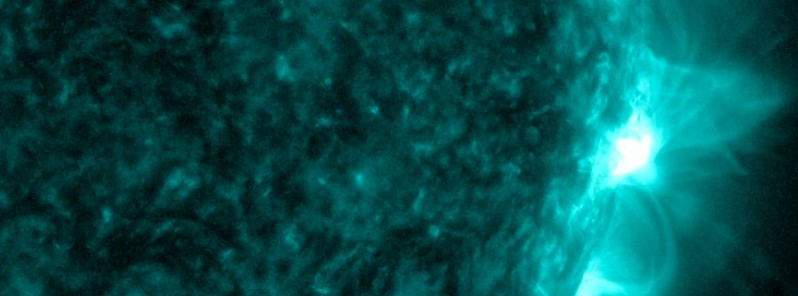Solar activity has reached moderate levels in 24 hours to 12:30 UTC on January 25, with a long-duration M4.6 flare peaking at 10:11 UTC today.
The source region of this flare appears to be departing Region 3190, located at S14W85 and classified as Dkc/beta-gamma.
No significant radio reports accompanied this flare but updated coronagraph imagery is still needed for any CME analysis for this event.1
HF (high frequency) radio communication was affected over Africa.
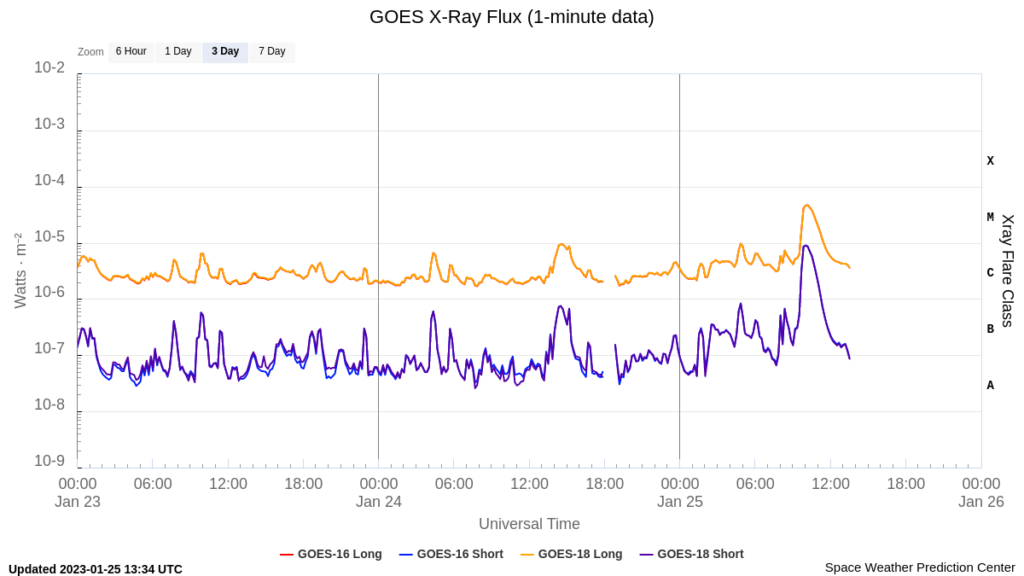
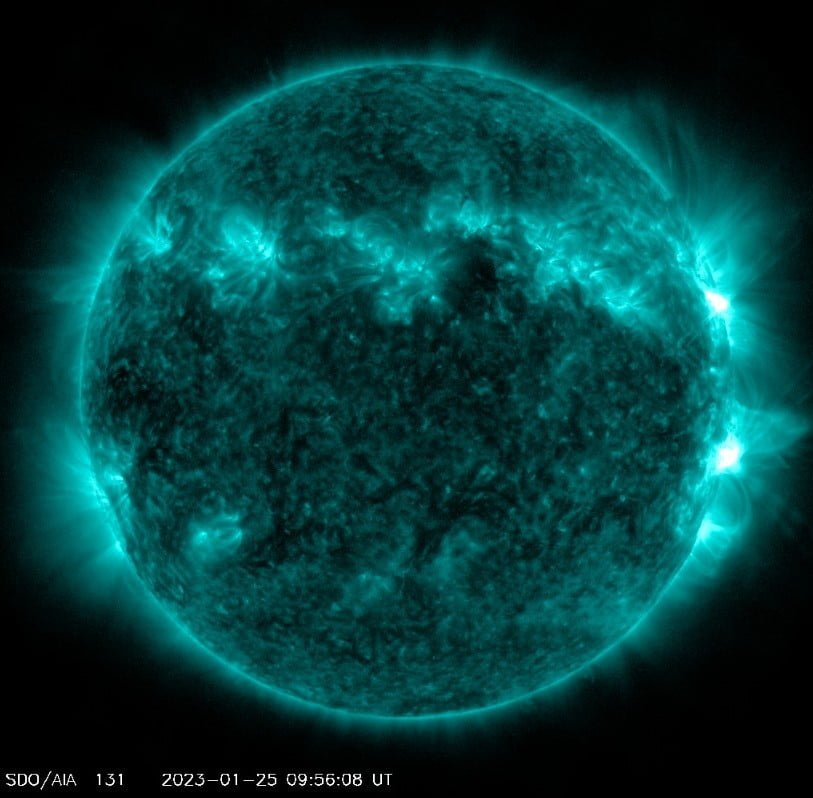
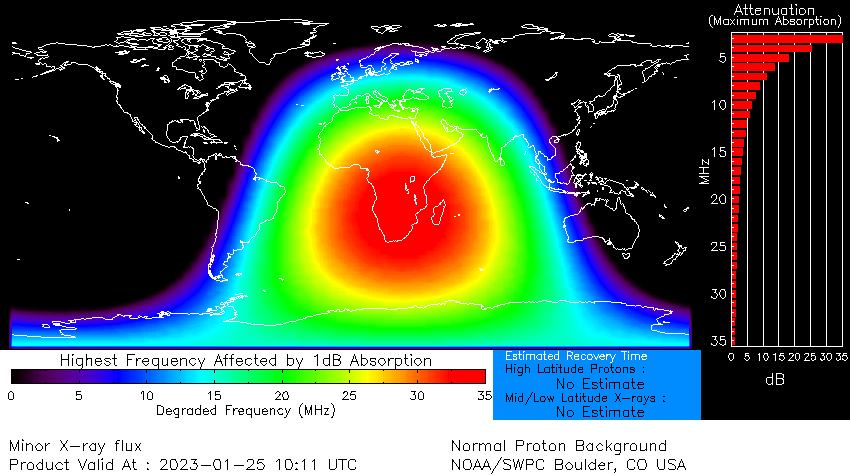
A long-duration C9/Sf solar flare was observed at 14:35 UTC on January 24, likely associated with the eruption of an approximately 14-degree-long filament centered near N29W58.
Analysis suggests that the majority of the material was ejected well north of the Sun-Earth line, meaning no impacts are expected at Earth.
Another C9 flare was observed at 04:53 UTC on January 25 from Region 3192 (N16W76, Cao/beta). Additionally, various other low-level C-class flares were observed during this period from different regions.
Region 3190 remains the most magnetically complex region, however, it has begun to show signs of decay as it approaches the western limb.
Other regions, such as 3196 (N15W40, Cso/beta), 3197 (N20W30, Dao/beta), and 3199 (N16W01, Cao/beta), have had minor growth but remain mostly inactive. Regions 3198 (N26W16, Cso/beta) and 3200 (N23E29, Cao/beta) continue to remain quiescent. A new spot group, 3201 (N25E52, Hsx/alpha), has been numbered but has been unremarkable during this period.
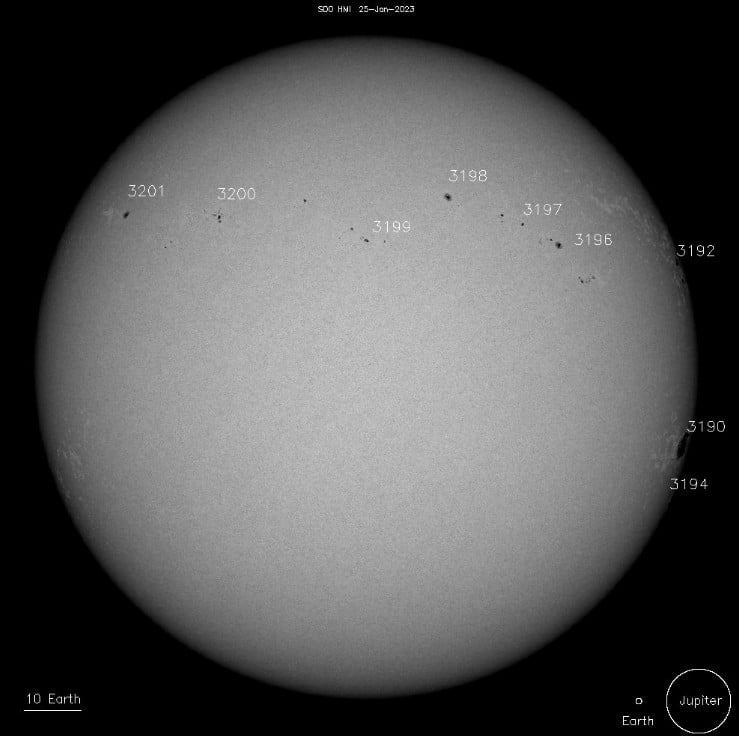
No Earth-directed Coronal Mass Ejections (CMEs) have been observed in available imagery.
Looking forward, solar activity is expected to remain low with a chance for M-class flares (R1-R2 Minor-Moderate) and a slight chance for an isolated X-class flare (R3-Strong) on January 25 and 26 as Region 3190 remains magnetically complex. The likelihood of these flares decreases slightly by January 27 as the region exits the solar disk.
The greater than 2 MeV electron flux has been normal to moderate and the greater than 10 MeV proton flux has remained at background levels in 24 hours to 12:30 UTC today. The greater than 2 MeV electron flux is expected to continue at normal to moderate levels on January 25, with a likely increase to moderate to high levels late on January 25 or early January 26 due to CH HSS influence. There is a slight chance for a greater than 10 MeV proton event on all three days.
Solar wind parameters have reflected a return to mostly background conditions. The total field has averaged near 5 nT for most of this period, while the Bz component has been variable between +/- 5 nT. Solar wind speeds have mostly been between 400-450 km/s and Phi has been positive. The solar wind environment is expected to see enhancements on January 25 and 26 due to positive polarity CH HSS influence and any weak peripheral transient effects. Conditions should begin to weaken by January 27 as CH/CME effects dissipate.
The geomagnetic field has been at quiet levels and is expected to be at unsettled to isolated active levels, with a chance for an isolated G1 period on January 25 and 26 in response to positive polarity CH HSS effects combined with possible CME influence. By January 27, conditions should begin to return to more nominal levels.
1 Forecast Discussion – Issued: 2023 Jan 25 1230 UTC – Prepared by the U.S. Dept. of Commerce, NOAA, Space Weather Prediction Center

